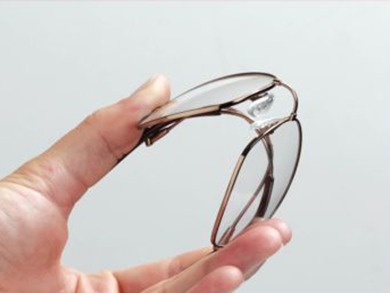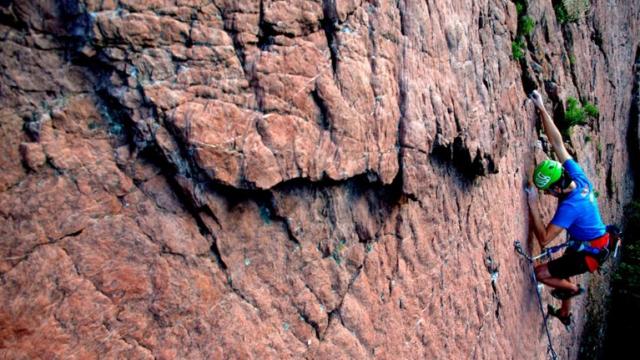Rock and mountain climbers rely on strong, yet elastic ropes to keep them safe should they happen to fall. Now mathematicians at the University of Utah have come up with an equation to design an ideal climbing rope — one that would be safer and more durable. They described this perfect rope, and a promising class of materials that might be used to make it, in a recent paper in the Journal of Sports Engineering and Technology.
Mathematician Trevor Dick shows some slick climbing moves in Parley’s Canyon near Salt Lake City. (Image: Justin Boyer/University of Utah)
Climbing ropes are designed with a bit of stretch in them — the better to absorb some of the impact during a fall — although the ropes will gradually lose their elasticity over time. They’re usually made of nylon fibre, twisted at the core to give the ropes their strength. But “with a normal rope, you’re going to experience increasing force the longer you fall,” co-author Graeme Milton said in a statement. That means a harder jerk when a falling climber hits the end of the rope, depending on how far he or she has fallen.
An ideal rope, like the one envisioned by Milton and his co-authors, would slow down climbers as they fall by applying a constant deceleration force, thereby bringing the climber to a gradual stop rather than hitting the end of the rope with sudden jerk. It’s the same concept as applying the brakes evenly when decelerating in a car over a short fixed distance to avoid giving yourself whiplash. As Milton explained, “The ideal climbing rope would decelerate a falling climber in the same way that on an aircraft carrier, the braking cable and its hydraulics slow down and stop a jet within a short distance.”

Bendable eyeglass frames made with nitinol. (Image: Stanford Advanced Materials)
Right now this ideal rope is purely theoretical, but Milton et al‘s paper demonstrates that it’s at least mathematically possible to design something like this. They even proposed a promising class of materials: So-called shape-memory materials, which “remember” their original shape and return to it even after they’re deformed.
One example is the nitinol wire found in everything from helicopter blades, stents and heart valves, to golf clubs, underwire bras and flexible eyeglass frames. These materials can absorb a lot of energy, so a rope made out of the stuff would stretch out and then retract slowly, instead of snapping back suddenly.
Unfortunately, nitinol (an alloy of nickel and titanium) is too heavy and expensive to make such an ideal rope, plus it’s ultra-sensitive to changes in temperature, and difficult to knot or coil. And the other known shape memory materials don’t stretch quite enough for climbing purposes: A rope made of them might stretch 108 per cent of its usual length, compared to 125 to 135 per cent for the top climbing ropes now being used. Combining a shape memory material with nylon fibre or other conventional materials might be one way to address that shortcoming.
It’s really just a first step. As the authors write in their paper, “We do not expect…to have an immediate effect on the climbing community, but by providing a prescription for a mathematically ideal rope,the work may help guide the development of new ropes.” Perhaps rock and mountain climbers will one day have cause to thank them.
